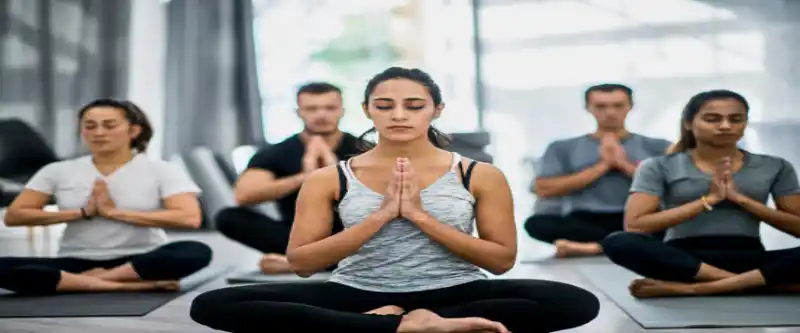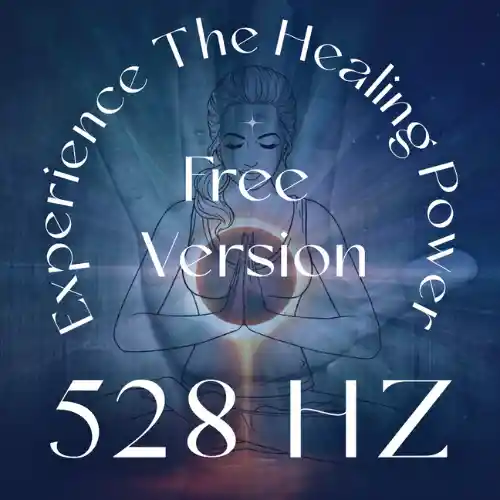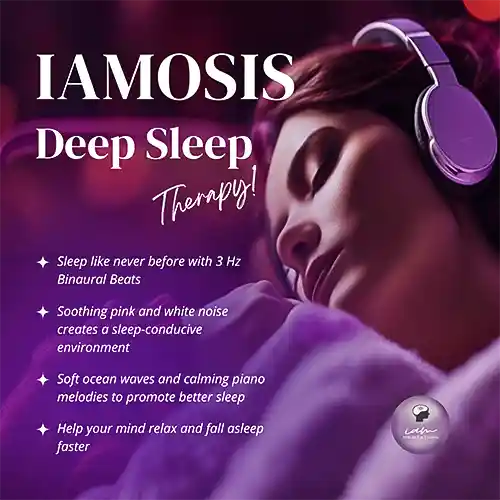Meditation And Its Methods
How To Choose the Right Meditation Method
Which is the right meditation method for your needs? Learn about all the meditation methods and choose the right one for you, to improve the quality of your life.
Tap into your inner wisdom
Meditation Methods
Meditation, an ancient practice rooted in spiritual and philosophical traditions, has gained significant popularity in recent years for its profound benefits on mental, emotional, and physical well-being.
In this article, we embark on a journey to explore the diverse landscape of meditation and its methods, and unveil the transformative power they hold.
At its core, meditation is a practice of training the mind to achieve a state of focused attention, inner clarity, and deep relaxation.
It offers a sanctuary for individuals seeking solace from the chaos of daily life, allowing them to tap into their inner wisdom, cultivate mindfulness, and experience a sense of profound connection.
In this vast universe of meditation, numerous techniques have emerged, each with its unique approach and intended outcomes.
By understanding and exploring these methods, individuals can discover the one that resonates most deeply with their personal preferences and goals.
Throughout this article, we will delve into various meditation techniques, unraveling their origins, methodologies, and benefits.
Whether you are a seasoned meditator or someone curious to embark on this soul-nurturing journey, join us as we unravel the wisdom and power of meditation techniques.

Through the practice of mindfulness, transcendence, loving-kindness, visualization, mantra, chakra balancing, movement, and the gentle embrace of each breath, we awaken the dormant wisdom within. As we walk the path of self-discovery, let us remember that in choosing the right method for our unique journey, we embrace the transformative power of meditation, for it is in this sacred space of the present moment that we find liberation, connection, and the infinite wellspring of our own divine essence.
I AM Meditations
Table of Contents
Cultivating present moment awareness
Mindfulness Meditation

Mindfulness meditation has gained immense popularity in recent years as a powerful practice for cultivating present moment awareness and inner peace. Originating from ancient Buddhist traditions, mindfulness meditation has found its way into various modern settings, including healthcare, education, and personal development.
At its core, mindfulness meditation involves directing our attention to the present moment without judgment. The practice invites us to observe our thoughts, emotions, and bodily sensations with curiosity and acceptance.
By training our minds to focus on the here and now, it enables us to develop a deep sense of self-awareness and a greater capacity to respond skillfully to life’s challenges. One of the fundamental techniques in mindfulness meditation is focusing on the breath.
How to Practice Mindfulness Meditation
Sitting comfortably in a quiet space, we bring our attention to the sensation of our breath. Feel the air entering and leaving your nostrils or the rise and fall of your abdomen.
As thoughts arise, acknowledge them non-judgmentally and gently redirect your attention back to the breath. This practice helps to anchor us in the present moment and cultivate a sense of calm and clarity.
The benefits of mindfulness meditation
The benefits of mindfulness meditation are extensive. Research has shown that regular practice can reduce stress, anxiety, and depression, while enhancing emotional well-being and overall mental resilience. It has also been found to improve focus, attention, and cognitive abilities.
Moreover, it supports better self-regulation and the development of healthier relationship patterns. Incorporating mindfulness meditation into our daily lives can be transformative. By setting aside dedicated time each day, even just a few minutes, we can reap the rewards of this practice.
As we cultivate a non-judgmental and compassionate attitude towards ourselves and our experiences, we become more attuned to the present moment, fostering a deeper connection with ourselves and the world around us.
Reduce stress and anxiety
Transcendental Meditation

Transcendental Meditation (TM) is a widely practiced technique that has gained popularity for its ability to induce deep relaxation and promote self-awareness. Originating from ancient Vedic traditions in India, TM has become a well-established method for achieving mental clarity and inner peace.
At its core, Transcendental Meditation involves the use of a mantra—a sacred sound or phrase—repeated silently in the mind. The mantra serves as a focal point, allowing practitioners to transcend their ordinary thoughts and enter a state of deep consciousness.
How to Practice Transcendental Meditation
The process of practicing TM begins by finding a comfortable seated position, closing the eyes, and settling into a relaxed state. The chosen mantra, specifically assigned by a qualified TM teacher, is then silently repeated in the mind.
The repetition of the mantra acts as a vehicle to go beyond the surface level of the mind, effortlessly transcending thoughts and accessing a state of pure awareness.
During Transcendental Meditation, practitioners experience a deep sense of relaxation and restfulness. The mind becomes more settled, and stress and anxiety naturally diminish. With regular practice, individuals often report improved focus, clarity of mind, and a heightened sense of well-being.
The benefits of Transcendental Meditation
One of the key benefits of TM is its simplicity and accessibility. It can be practiced by people of all ages and backgrounds, without the need for extensive training or belief systems. The technique has been widely researched and shown to have numerous positive effects on both mental and physical health.
Scientific studies have demonstrated that regular TM practice can reduce stress and anxiety, lower blood pressure, and improve cardiovascular health. It has also been associated with increased creativity, improved cognitive function, and enhanced overall happiness and well-being.
Transcendental Meditation is not just a temporary relaxation technique; it is a practice that can be incorporated into one’s daily routine. The recommended duration for each TM session is 20 minutes, ideally practiced twice a day—once in the morning and once in the evening.
If you are considering practicing Transcendental Meditation, it is highly recommended to receive instruction from a certified TM teacher. They will guide you through the process, provide you with a suitable mantra, and offer ongoing support and guidance on your meditation journey.
You can also try our Transcend Meditation Music to enhance your experience, and gain all the benefits of professionally recorded meditation music. The track is specifically designed to induce deep relaxation states with profound effects on our energy field.
A powerful practice for self-love
Loving-Kindness Meditation

Loving-kindness meditation, also known as metta meditation, is a powerful practice that cultivates compassion, love, and kindness towards oneself and others. It is rooted in various spiritual traditions and has gained popularity for its profound impact on emotional well-being.
Loving-kindness meditation begins by finding a comfortable and quiet space where you can relax and focus inward.
How to Practice Loving-Kindness Meditation
Take a few moments to settle into a relaxed posture, either sitting or lying down, and allow your body and mind to find stillness.
To start the practice, bring your attention to your breath. Take a few deep breaths, inhaling and exhaling slowly, allowing yourself to enter a state of relaxation. As you continue to breathe gently, bring your awareness to your heart center, the seat of compassion and love.
Now, begin by directing loving-kindness towards yourself. Silently repeat positive and affirming phrases, such as “I AM Love, I AM Happy, I AM Peaceful, I AM Free.” Allow these words to resonate within you, feeling a genuine sense of warmth and love towards yourself.
Visualize this loving-kindness enveloping your entire being, embracing yourself with unconditional acceptance and compassion. Once you have established a strong connection with self-love, gradually extend the loving-kindness to others.
You can start with someone close to you, perhaps a loved one or a dear friend. Repeat the same phrases with the person’s name. Imagine them surrounded by love and well-being, experiencing happiness and inner peace.
Next, expand the circle of loving-kindness to include neutral individuals, such as acquaintances or strangers. Extend the same loving wishes towards them, recognizing their humanity and inherent worth.
Finally, move towards those with whom you may have difficulties or conflicts. This step can be challenging but transformative. Offer loving-kindness to these individuals, wishing them well-being, forgiveness, and inner peace. Embrace the power of compassion to heal and transform relationships.
Throughout the practice, remember to breathe deeply and allow the feelings of love and kindness to flow freely. If distracting thoughts arise, gently acknowledge them without judgment and return your focus to the loving-kindness phrases.
The benefits of Loving-Kindness Meditation
Loving-kindness meditation offers numerous benefits. It promotes emotional well-being by reducing stress, anxiety, and feelings of isolation. It enhances self-compassion, self-esteem, and overall happiness. Regular practice can cultivate a genuine sense of empathy, fostering healthier relationships and a greater sense of connectedness with others.
As you conclude your loving-kindness meditation session, take a moment to express gratitude for the experience and the love you have cultivated. Carry this loving energy with you throughout your day, extending kindness and compassion to yourself and those around you.
You can enhance your practice and experience using specifically designed meditation music, for this kind of practice. We encourage you to try out our I AM Love Meditation Music track, and experience the power of Sound Therapy.
It is based on Solfeggio Frequencies 396 Hz and 963 Hz and it will help you relax your body and mind and increase spiritual awareness.
The creative power of the mind
Visualization Meditation

Visualization meditation is a powerful technique that harnesses the creative power of the mind to manifest positive outcomes and promote relaxation. By engaging the imagination and visualizing specific scenarios or imagery, individuals can enter a state of deep focus and clarity.
Visualization meditation involves creating vivid mental images and immersing oneself in them during the meditation practice. It taps into the mind’s ability to influence emotions, beliefs, and actions through the power of visualization.
When practiced regularly, visualization meditation can enhance creativity, improve goal achievement, and cultivate a sense of inner peace.
How to Practice Visualization Meditation
To begin a visualization meditation, find a quiet and comfortable space where you can relax without distractions. Close your eyes and take a few deep breaths, allowing your body and mind to settle. Then, choose a specific scenario or outcome you wish to visualize.
For example, you might visualize yourself excelling in a challenging situation, achieving a personal goal, or experiencing a serene natural setting.
Engage all your senses in the visualization, imagining the sights, sounds, smells, tastes, and textures associated with your chosen scenario. As you immerse yourself in the visualization, focus on the positive emotions and sensations that arise.
Allow yourself to feel the joy, confidence, and fulfillment that come with manifesting your desired outcome. Stay present in the visualization, savoring every detail and embracing the positive energy it generates.
The benefits of Visualization Meditation
Visualization meditation can be particularly beneficial for athletes, performers, and individuals striving for personal growth. By visualizing success, they can enhance their skills, boost their confidence, and align their actions with their desired outcomes.
Moreover, it is a valuable tool for stress reduction and relaxation, as it transports the mind to a tranquil and harmonious mental landscape.
It’s important to note that the effectiveness of visualization meditation lies in the belief and intention behind the practice. By truly immersing yourself in the visualization and trusting in its potential to manifest positive change, you harness the full power of this technique.
To incorporate visualization meditation into your daily life, set aside dedicated time for practice. Consistency is key, so aim to make it a regular part of your routine.
The power of sacred sound
Mantra Meditation

Mantra meditation is a practice deeply rooted in various spiritual traditions and has been revered and utilized for centuries. The purpose of mantra meditation is to harness the power of sacred sounds to cultivate inner peace, focus, and spiritual growth.
Mantras are sacred syllables, words, or phrases that are repeated silently or chanted aloud during meditation. They hold vibrational energy and serve as powerful tools to quiet the mind and connect with a deeper level of consciousness. Each mantra carries its own unique significance and resonance, providing a focal point for the practitioner’s attention.
The intentions behind mantra meditation are manifold. Firstly, mantras help to calm and quiet the incessant chatter of the mind. As we repeat the mantra, our focus shifts from the external distractions to the rhythmic vibrations of the sacred sounds. This repetition acts as an anchor, allowing us to center our awareness and transcend the fluctuations of the thinking mind.
Additionally, mantra meditation facilitates the process of self-transformation and spiritual awakening. The continuous repetition of the mantra creates a resonance within our being, aligning our thoughts, emotions, and energies with higher states of consciousness. This harmonization leads to a profound sense of inner peace, clarity, and connection to the divine.
How to Practice Mantra Meditation
To begin your mantra meditation practice, find a comfortable seated position and close your eyes. Choose a mantra that resonates with you personally, or seek guidance from a qualified teacher.
As you settle into your meditation, softly and repetitively recite the chosen mantra, either silently or aloud. Allow the mantra to flow effortlessly, allowing it to merge with your breath and heartbeat.
Remember, the key to mantra meditation lies in the repetition and the intention behind it. Let go of any expectations or judgments and surrender to the rhythm of the mantra. If your mind wanders, gently bring your focus back to the sound and vibration of the mantra.
The benefits of Mantra Meditation
The benefits of mantra meditation are both experiential and transformative. By engaging in this practice, practitioners often report an increased sense of calmness, reduced stress, and improved overall well-being.
Mantras can help to dissolve negative thought patterns, release emotional blockages, and cultivate positive qualities such as love, compassion, and gratitude. As you continue with regular mantra meditation practice, you may notice an expansion of awareness, increased clarity of thought, and a deepening sense of spiritual connection.
Embrace the journey of self-discovery and inner transformation that mantra meditation offers, allowing the sacred sounds to guide you to a place of profound peace and self-realization.
Free 528 HZ Solfeggio Frequency Music track, which is specially designed to help you tune into this powerful vibration and activate your inner healing potential.
Connect with your inner self, release negative emotions, thoughts, feelings, and beliefs, relax your body and mind, and increase spiritual awareness.
Balance and activate your energy centers
Chakra Meditation

Chakra meditation is a powerful technique that aims to balance and activate the energy centers within the body known as chakras. Derived from ancient Eastern philosophies and practices, chakra meditation offers a profound way to harmonize the mind, body, and spirit.
Chakras are spinning wheels of energy located along the spine, each corresponding to specific physical, emotional, and spiritual aspects of our being.
There are seven main chakras, starting from the base of the spine and extending to the crown of the head. The chakras serve as gateways for the flow of energy, and when they are in balance, we experience a sense of well-being and vitality.
How to Practice Chakra Meditation
The practice of chakra meditation begins with creating a calm and peaceful environment. Find a quiet space where you can sit comfortably, either on a cushion or a chair with your feet firmly grounded. Close your eyes and take a few deep, cleansing breaths, allowing any tension or stress to melt away.
To initiate the practice, start by setting an intention for your meditation. This can be as simple as desiring to balance your energy centers or cultivate inner harmony. Visualize a soft, warm light enveloping your entire being, preparing you for the journey within.
Now, bring your awareness to the first chakra, known as the Root Chakra, located at the base of the spine. Visualize a vibrant red light spinning at this energy center, representing stability, grounding, and a sense of security. As you focus on the Root Chakra, allow any feelings of fear or insecurity to dissipate, replaced by a deep sense of safety and connection to the earth.
Move your attention to the second chakra, the Sacral Chakra, positioned just below the navel. Envision a radiant orange light swirling at this energy point, symbolizing creativity, passion, and emotional well-being. With each breath, feel your emotions flowing freely and harmoniously, nurturing your creativity and sensuality.
Continue your journey upward to the third chakra, the Solar Plexus Chakra, located in the upper abdomen. Visualize a bright yellow light spinning in this area, representing personal power, self-confidence, and willpower. As you connect with the Solar Plexus Chakra, embrace your inner strength and assertiveness, allowing your authentic self to shine brightly.
Next, direct your awareness to the fourth chakra, the Heart Chakra, situated in the center of the chest. Imagine a beautiful emerald green light radiating from this energy center, symbolizing love, compassion, and harmony. As you focus on the Heart Chakra, invite feelings of love and forgiveness to fill your heart, both for yourself and others.
Shift your attention to the fifth chakra, the Throat Chakra, positioned at the throat area. Envision a soothing blue light rotating at this energy center, representing self-expression, clear communication, and authenticity. As you connect with the Throat Chakra, allow your voice to be heard, speaking your truth with confidence and clarity.
Continue your ascent to the sixth chakra, the Third Eye Chakra, located between the eyebrows. Visualize an indigo light spinning at this point, symbolizing intuition, inner wisdom, and heightened awareness. As you focus on the Third Eye Chakra, trust your intuition and embrace your inner guidance, allowing your perception to expand beyond the physical realm.
Finally, direct your attention to the seventh chakra, the Crown Chakra, situated at the top of the head. Imagine a radiant violet light revolving at this energy center, representing spiritual connection, divine consciousness, and enlightenment. As you connect with the Crown Chakra, open yourself to a sense of unity with the universe, experiencing a profound connection to the higher realms of existence.
Throughout the practice of chakra meditation, you can spend as much time as you like on each chakra, allowing yourself to fully immerse in the experience. Remember to breathe deeply and stay present, allowing the energy to flow harmoniously through each chakra, bringing balance, healing, and transformation to your being.
Harmony between the mind and body
Movement-Based Meditation

Movement-based meditation practices offer a unique approach to cultivating mindfulness and achieving a state of inner tranquility.
These practices integrate gentle movements, breath awareness, and focused attention to promote a harmonious connection between the mind and body.
How to Practice Movement-Based Meditation
Let’s explore some popular forms of movement-based meditation.
Yoga: Originating from ancient India, yoga has become widely practiced around the world for its physical, mental, and spiritual benefits. Through a series of postures, controlled breathing, and meditation, yoga encourages the union of body, mind, and spirit.
As practitioners move through the poses, they cultivate present-moment awareness and develop strength, flexibility, and balance. Yoga provides a holistic approach to meditation by incorporating mindful movement and deep relaxation.
Tai Chi: Rooted in Chinese martial arts, Tai Chi is a graceful and slow-motion practice that combines movement and meditation. With its flowing, continuous sequences of movements, Tai Chi aims to cultivate inner calmness, improve physical balance, and enhance the flow of life energy, known as Qi.
By synchronizing movement with deep breathing and focused awareness, practitioners experience a sense of tranquility and a harmonious connection with the surrounding environment.
Qigong: Similar to Tai Chi, Qigong is a practice that emphasizes the cultivation and harmonization of Qi, the vital life energy. Qigong incorporates gentle movements, breath control, and focused intention to enhance physical vitality, mental clarity, and emotional well-being.
Through repetitive and mindful movements, individuals cultivate a deep sense of inner stillness and a heightened awareness of the body’s energy flow.
The Benefits of Movement-Based Meditation
These movement-based meditation practices offer numerous benefits. They improve physical health, increase flexibility and strength, reduce stress, and promote overall well-being.
By combining mindful movement with breath awareness, practitioners develop a deeper connection with their bodies, allowing for greater self-awareness and self-acceptance.
It’s important to note that each practice mentioned here has its unique characteristics and may resonate differently with individuals. It’s recommended to explore various forms of movement-based meditation and find the one that suits your preferences and needs best.
Connect with your body
Walking Meditation

Walking meditation is a practice that combines physical movement with mindfulness to cultivate awareness and tranquility.
It offers an opportunity to bring mindfulness into daily activities, allowing individuals to experience a deep connection with their bodies and the present moment.
How to Practice Walking Meditation
To practice walking meditation, find a quiet and peaceful place where you can walk comfortably. It can be indoors or outdoors, as long as you have enough space to walk freely.
Begin by standing still and taking a few moments to center yourself. Feel your feet firmly planted on the ground, and bring your attention to your breath, taking slow and intentional breaths. As you start walking, maintain a slow and deliberate pace, focusing your attention on the sensations of each step.
Pay attention to the physical sensations of your feet touching the ground, the movement of your legs, and the shifting of your body weight with each step. Allow your body to move naturally, and let go of any unnecessary tension. Engage your senses fully in the experience. Notice the feeling of the air against your skin, the sounds around you, and any scents in the environment.
As you walk, bring your attention to the present moment, letting go of any thoughts or distractions. If your mind wanders, gently guide your focus back to the sensations of walking.
As you continue walking, be aware of your surroundings. Observe the colors, shapes, and textures of the objects around you. Connect with the nature and beauty that may be present in your environment. Let the experience of walking become a mindful exploration of the world around you.
In walking meditation, the goal is not to reach a specific destination, but to be fully present in each step. Embrace the rhythm of your breath and the flow of movement as you walk. Allow yourself to be fully immersed in the experience, finding peace and clarity in the simplicity of walking.
Walking meditation can be incorporated into your daily routine. You can choose to dedicate a specific time for walking meditation, such as during your lunch break or in the morning, as a way to start your day mindfully. Alternatively, you can integrate it into your regular walks, bringing conscious awareness to each step you take.
The Benefits of Walking Meditation
The benefits of walking meditation are numerous. It allows you to reconnect with your body and The Present Moment, fostering a sense of grounding and inner peace.
Walking meditation can also enhance your physical fitness by encouraging movement and increasing awareness of your body’s sensations. It is a simple yet profound way to deepen your mindfulness practice and bring greater awareness to your everyday experiences.
The Happiness Frequency of 528 Hz, has been linked to promoting feelings of positivity and well-being.
Experience a restful night’s sleep like never. Synchronize your brainwaves with the frequency of deep sleep.
Experience a deep connection
Body Scan Meditation

Body scan meditation is a technique that involves systematically bringing attention to different parts of the body, promoting relaxation and mindfulness. It is a powerful practice for cultivating a deep sense of bodily awareness and releasing tension.
How to Practice Body Scan Meditation
The practice of body scan meditation begins by finding a comfortable position, either sitting or lying down. Allow your body to relax and settle into a position that feels natural for you.
Take a few deep breaths, inhaling slowly through your nose and exhaling through your mouth. Allow your breath to become steady and calm. Once you feel centered and present, shift your attention to the sensations in your body.
Start at the top of your head and slowly scan down through your body, part by part, bringing gentle awareness to each area. As you bring your attention to each body part, notice any sensations you may be experiencing.
Observe any tension, warmth, coolness, or tingling sensations without judgment. Simply acknowledge and accept them as they are. If you encounter any areas of tension or discomfort, consciously relax those muscles. Imagine the tension melting away with each exhale. Soften and let go of any tightness you may be holding in your body.
Continue moving systematically through your body, bringing awareness to each part. You can go from your head to your toes, or choose a different sequence that feels right for you. Spend a few moments with each body part before moving on.
As you scan your body, try to maintain a sense of non-judgmental awareness. Avoid getting caught up in any thoughts or judgments that may arise. Simply observe the sensations and let them pass.
Once you have scanned your entire body, take a few moments to experience the sensations of your body as a whole. Notice any shifts or changes that may have occurred during the practice.
Before concluding the meditation, take a moment to express gratitude for your body and the experience of mindfulness. Recognize the connection between your mind and body and the importance of self-care.
Body scan meditation can be practiced for various durations, depending on your preference and availability of time. It can be a short 5-minute practice or extended to 20–30 minutes for a more in-depth experience.
Connect with your breath
Breathing Techniques

Breathing techniques play a vital role in meditation, allowing individuals to connect with their breath and cultivate a sense of calm and relaxation. One of the most commonly practiced breathing techniques in meditation is diaphragmatic breathing, also known as deep belly breathing.
This technique involves consciously breathing deeply into the diaphragm, allowing the abdomen to expand on the inhalation and contract on the exhalation. Diaphragmatic breathing promotes a state of relaxation by activating the body’s natural relaxation response and soothing the nervous system.
Another effective breathing technique is alternate nostril breathing. This practice involves gently closing one nostril with the thumb and inhaling through the other nostril. After a full inhalation, the individual switches nostrils by closing the other nostril with the ring finger and exhaling through the first nostril.
This rhythmic pattern of inhalation and exhalation through alternating nostrils helps balance the energy in the body and bring about a sense of equilibrium.
Box breathing is a simple yet powerful breathing technique that can be practiced anywhere. It involves inhaling for a count of four, holding the breath for a count of four, exhaling for a count of four, and holding the breath again for a count of four. This technique helps regulate the breath, slow down the heart rate, and induce a state of relaxation and focus.
The Benefits of Breathing Techniques
Conscious breathing techniques in meditation can have numerous benefits. They not only help calm the mind and relax the body but also enhance self-awareness and presence in the present moment.
By directing attention to the breath, individuals can anchor themselves in the here and now, letting go of distracting thoughts and worries.
As you explore different breathing techniques in meditation, it’s essential to find the one that resonates most with you. Experiment with various techniques and observe how your body and mind respond to each one.
Some individuals may prefer the soothing rhythm of diaphragmatic breathing, while others may find solace in the balance of alternate nostril breathing. The key is to choose a breathing technique that feels comfortable and natural for you.
How to make that decision
Choosing the Right Method
When it comes to meditation, there is no one-size-fits-all approach. Each individual is unique, with different preferences, goals, and lifestyles. It is important to choose the right meditation method for you.
Here is some guidance on how to make that decision.
Reflect on Your Goals
Start by reflecting on your personal goals for meditation. Are you seeking stress reduction, inner peace, spiritual growth, or improved focus? Understanding your intentions will help you narrow down the options.
Take into account your personality traits and preferences. Are you more inclined towards stillness and silence, or do you enjoy movement and physical engagement? Some people thrive in structured practices, while others prefer more flexibility. Honoring your inclinations will make your meditation journey more enjoyable.
Assess Your Lifestyle
Take an honest look at your daily routine and commitments. Consider the time you can allocate to meditation and the environment in which you can practice. Some techniques require longer sessions, while others can be incorporated into brief moments throughout the day.
Familiarize yourself with the various meditation techniques we discussed in this article. Read about their principles, benefits, and recommended practices. You may resonate with certain methods based on their descriptions.
Try Them Out
Give yourself permission to explore different techniques and observe how they make you feel. Start with the ones that intrigue you the most or align with your goals. Keep an open mind and give each method a fair chance.
Pay attention to your intuition and inner guidance. Sometimes, a particular method may resonate with you on a deeper level, even if it doesn’t seem like the most popular or widely practiced one. Trust your instincts and choose what feels right for you.
Seek Guidance
If you feel overwhelmed or unsure, seek guidance from experienced meditation teachers, spiritual mentors, or even online communities. They can offer insights, suggestions, and support as you navigate the world of meditation.
Remember that finding the right meditation method may take time and experimentation. Be patient with yourself throughout the process. Stay committed to your practice, even if you encounter challenges or distractions along the way.
Ultimately, the right meditation method is the one that resonates with you on a personal level and supports your growth and well-being. Embrace the journey of self-discovery and trust that the perfect practice will reveal itself to you when the time is right.
Meditation, is the art of training the mind to achieve a state of deep relaxation and heightened awareness.
Believing in ourselves can open up a world of possibilities. We can achieve anything we set our minds to. If so, why are so many people failing?
Don’t miss out on our latest insights, tips, and resources for living a happier, healthier life.
Subscribe to our blog and receive regular doses of motivation, inspiration, and practical advice straight to your inbox!








